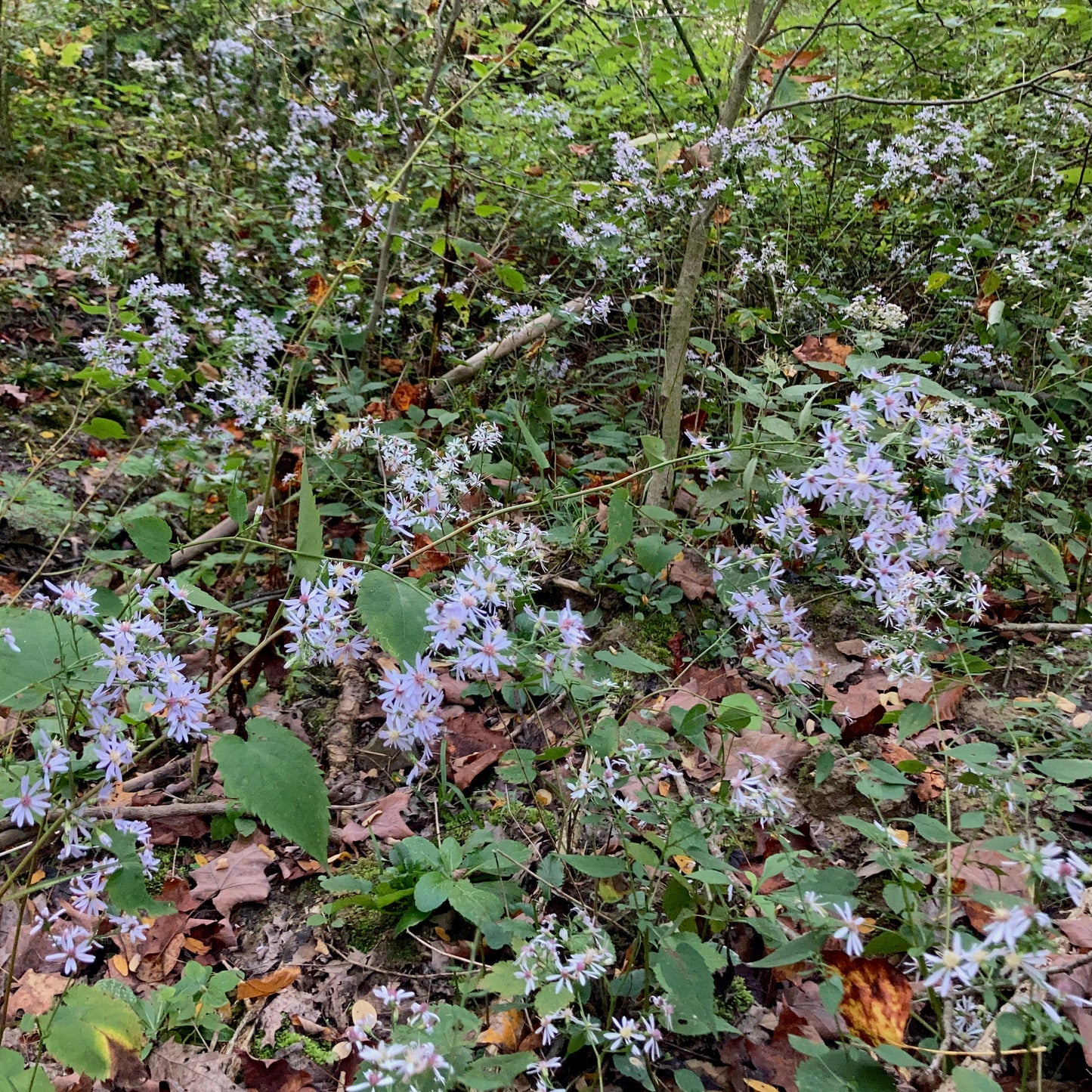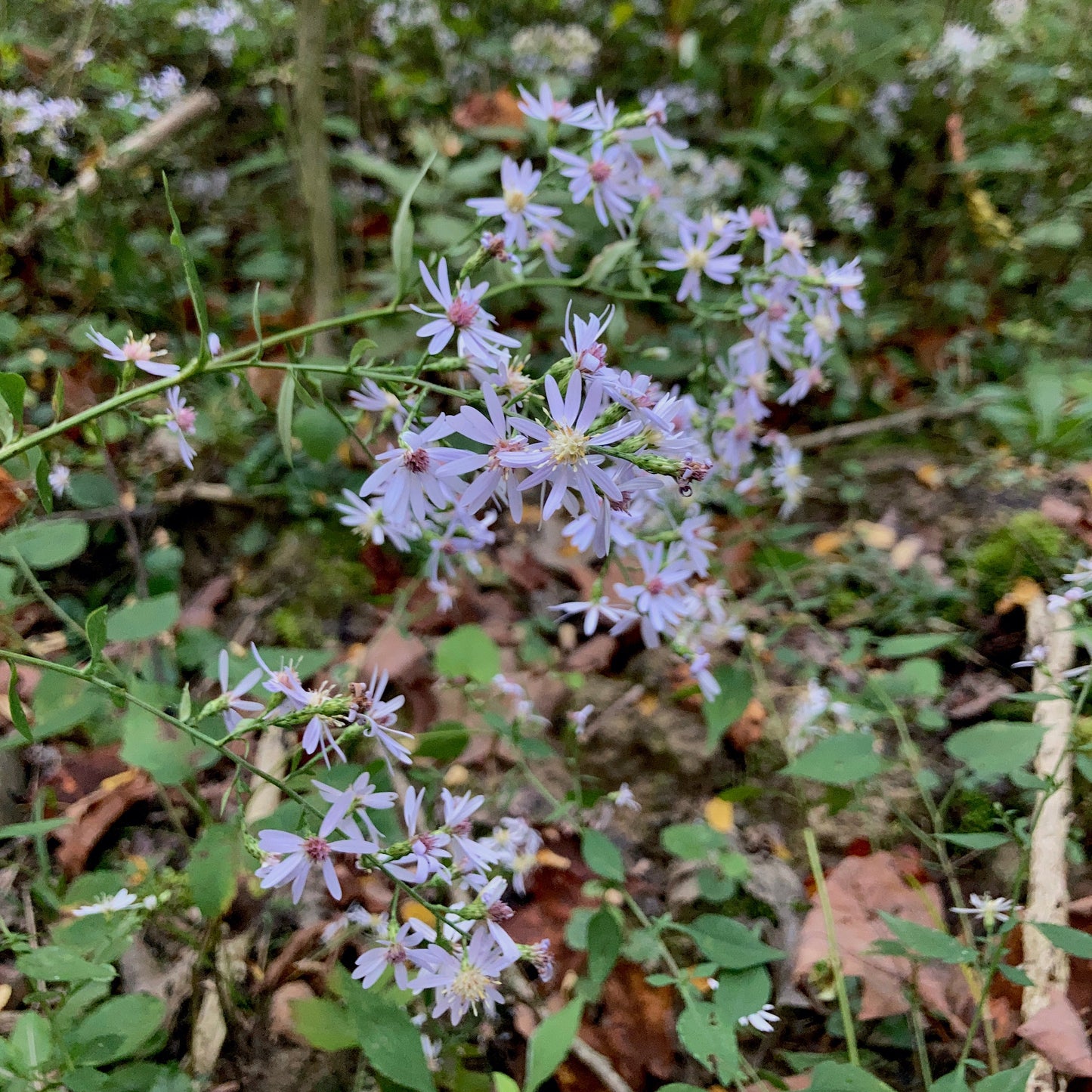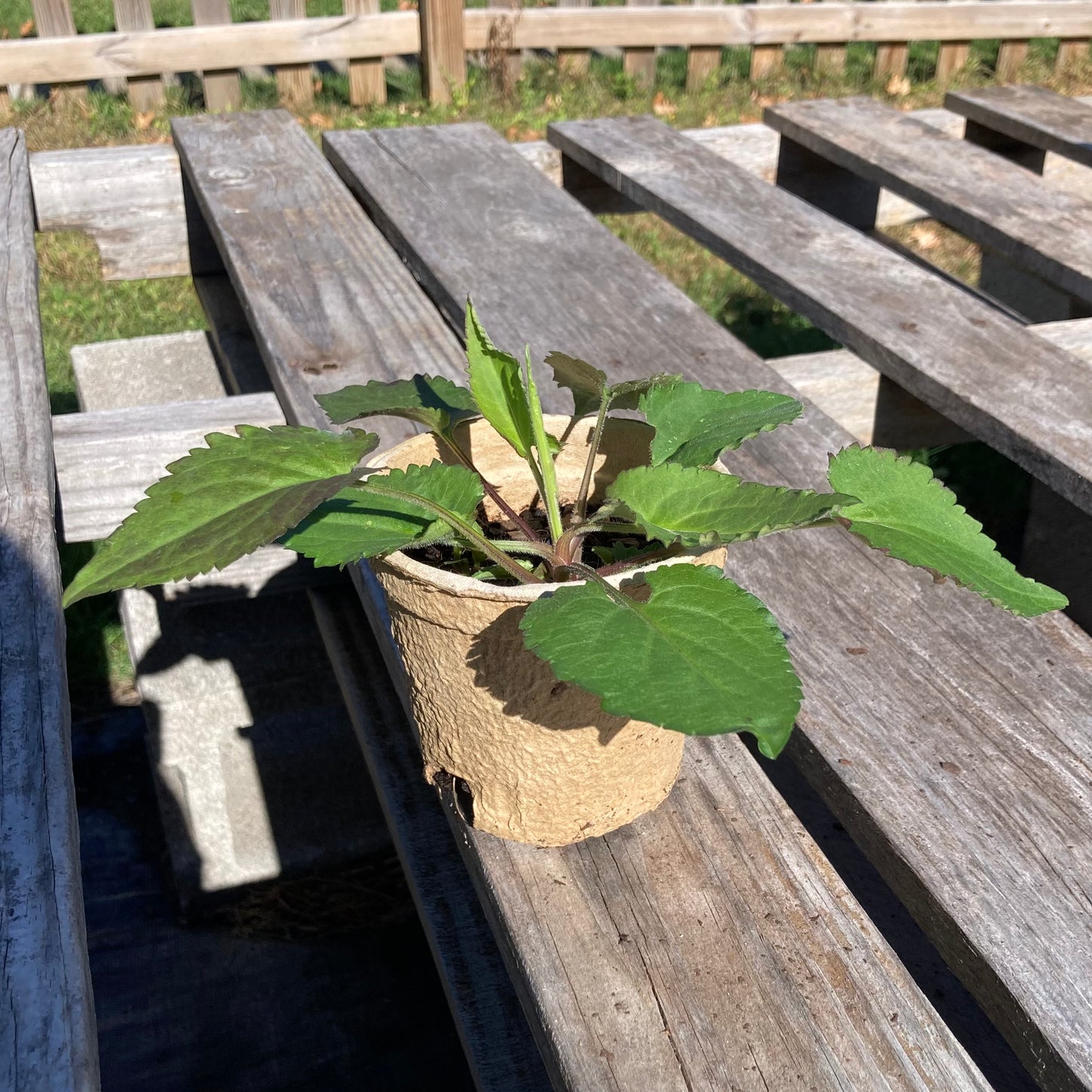Heart-leaved aster
Symphyotrichum cordifolium
Symphyotrichum cordifolium
1 remaining
Couldn't load pickup availability
Sun/shade: Part to full shade
Soil moisture: Dry to medium
Height: 3'
Flowering period: September
Deer resistance: Low
In early fall, heart-leaved aster’s mounding, pale blue blossoms transform the shade garden into a dreamscape. Many animals inhabit this ethereal realm, from buzzing bumble bees to fast-flying pearl crescent butterflies. The latter are stunning creatures, their black and amber wings possessing a warm glow, like the light of a campfire. Heart-leaved aster is both a host plant for pearl crescent caterpillars as well as a nectar plant for the adult butterflies.
Heart-leaved aster can be found in both high quality and disturbed sites, occupying forests and forest edges as well as vacant lots. The plant prefers to grow in soils of moderate to moderately dry moisture and under partial shade, though it can tolerate full shade as well as full sun. In the garden, heart-leaved aster may re-seed heavily, so removing old flowerheads prior to seed dispersal may be desirable. Heart-leaved aster can grow up to 4’ tall, and taller plants may lean or flop. To prevent this, the plant may be cut to a shorter height in mid-July, which will also encourage more branching and a shrubbier form. An outstanding aesthetic and wildlife plant for shady spaces, heart-leaved aster pairs well with white snakeroot and zigzag goldenrod.
Photos by Julie Slater.





